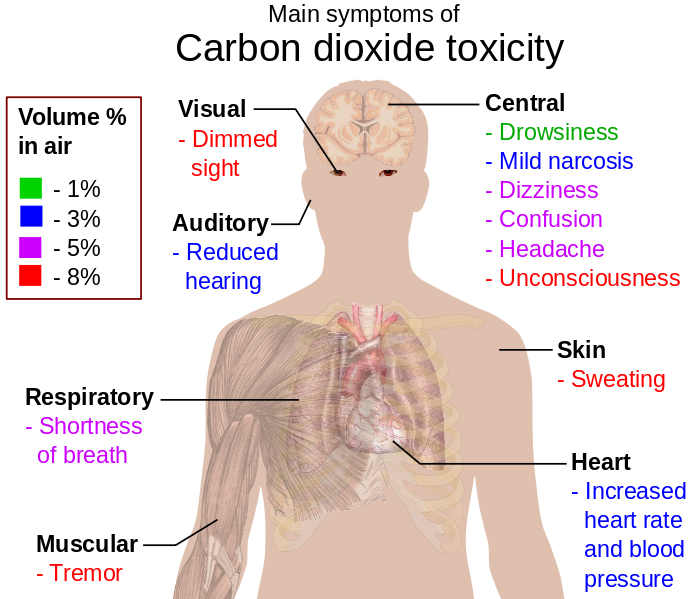It is a widely held belief in the environmental health sciences community that exposures to individual VOCs and SVOCs (Semi-Volatile Organic Compunds) in indoor environments ARE NOT the sole factor for health issues and symptoms so much as the COMBINATION of the chemicals in question. This is the basis for what indoor air quality scientists call “TVOC Theory”.
While exposures to VOCs tend to be at levels significantly lower (by two or more orders of magnitude) than safety precautions (PELs and TLVs) outlined by health advisory bodies such as the ACGIH and OSHA, it is believed that there is a synergistic (additive and multiplicative) effect caused by the combined chemical loading of the hundreds of different organic chemicals which may result in symptomology and even a condition known as Sick Building Syndrome. (SBS) This is what would be called in engineering parlance, a parametric (multiple factor) failure with no single chemical being solely responsible for illness.

Dose Response Model Relationship between TVOC levels and Health Effects (Toluene Equivalent) with 5 mg/m^3 and 25 mg/m^3 approximately equivalent to 1 ppmv and 5 ppmv toluene equivalent. Effect threshold for acute effects with exposure to sub-mixtures of 6-9 VOCs are less than 1.7 mg/m^3.
The biological mechanism for this phenomena is linked to the stimulation of the trigeminal nerve system which is also known as the “common chemical sense”. This system is one of two olfactory (smell) mechanisms by which humans respond to odor. The chemical sense organ consists of trigeminal nerves in the nasal cavity and eyes as well as the facial skin areas. Stimulation of these nerves produces irritation which includes burning, stinging and smarting. Other effects include changes in heart and respiratory rates, as well as coughing, sneezing and tearing up of the eyes.
TVOC theory is more an indicator of the risk of nonspecific sensory irritation to relatively unreactive VOCs as opposed to a generic indicator of the potential health risks of contaminated indoor air quality.

TVOC Dose Symptom Relationship Log Chart
A log-linear relationship between symptom prevalence rates and concentrations of terpenes, n-alkanes (C8-C11) and butanols in problem buildings. ScanTech checks for TVOCs in the Dallas, Fort Worth, Houston and Austin metropolitan areas.
More information can be found in this European report:

